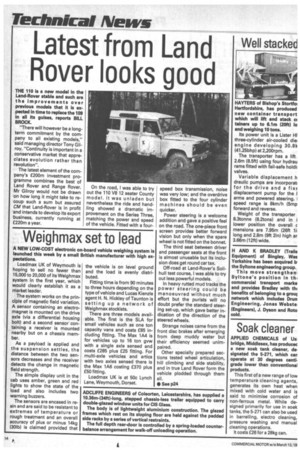Weighmax set to lead
Page 16

If you've noticed an error in this article please click here to report it so we can fix it.
is ex
Loadmax UK of Weymouth is hoping to sell no fewer than 15,000 to 20,000 of its Weighmax system in the first year, which would clearly establish it as a market leader.
The system works on the principle of magnetic field variation. A sensor containing an electromagnet is mounted on the drive axle (via a differential housing bolt) and a second sensor containing a receiver is mounted nearby but on a chassis member.
As a payload is applied and the suspension settles, the distance between the two sensors decreases and the receiver detects the change in magnetic field strength.
The simple display unit in the cab uses amber, green and red lights to show the state of the load and also includes two warning buzzers.
The sensors are encased in resin and are said to be resistant to extremes of temperature or rough treatment and an overall accuracy of plus or minus 14kg (30Ib) is claimed provided that the vehicle is on level ground and the load is evenly distributed.
Fitting time is from 90 minutes to three hours depending on the type of vehicle and Lucas Kienzle agent H. N. Hickley of Taunton is setting up a network of Weigh max stockists.
There are three models available. The first is the SLA for small vehicles such as one ton capacity vans and costs £85 including fitting. The Max 1A4 is for vehicles up to 16 ton gvw with a single axle sensed and costs £285 plus £25 fitting. For multi-axle vehicles and artics with two axles sensed there is the Max 1A6 costing £370 plus £50 fitting.
Loadmax UK is at 50c Lynch Lane, Weymouth, Dorset.




























































































